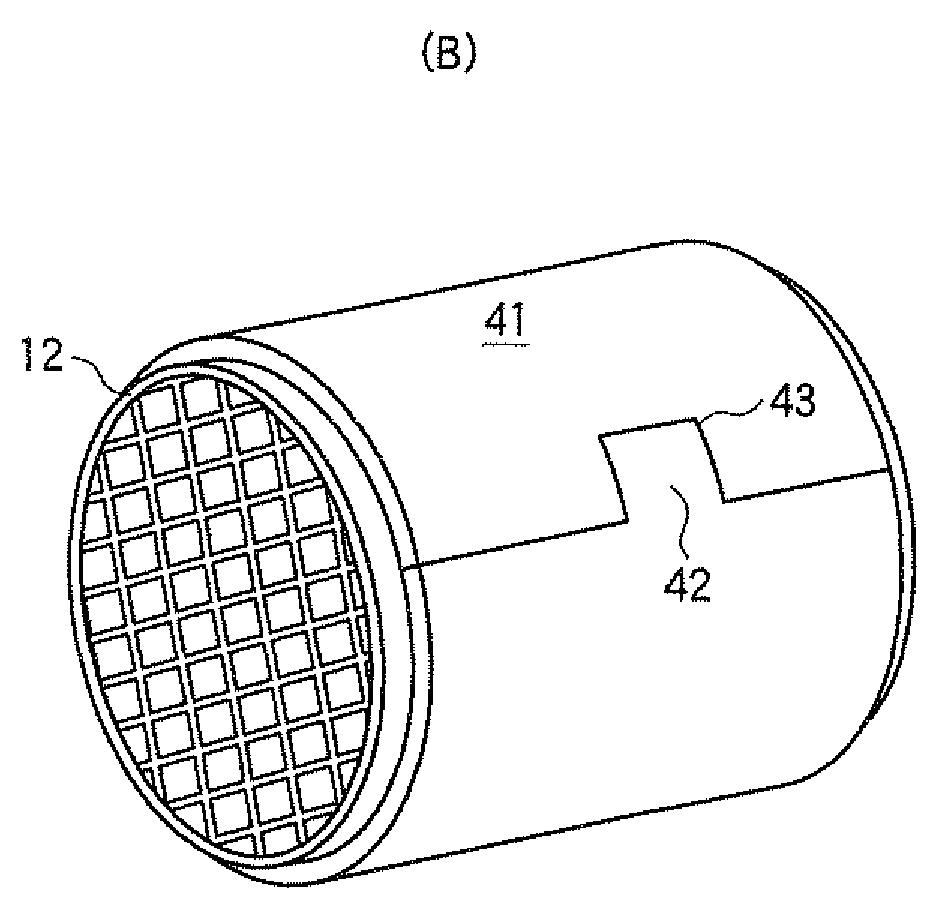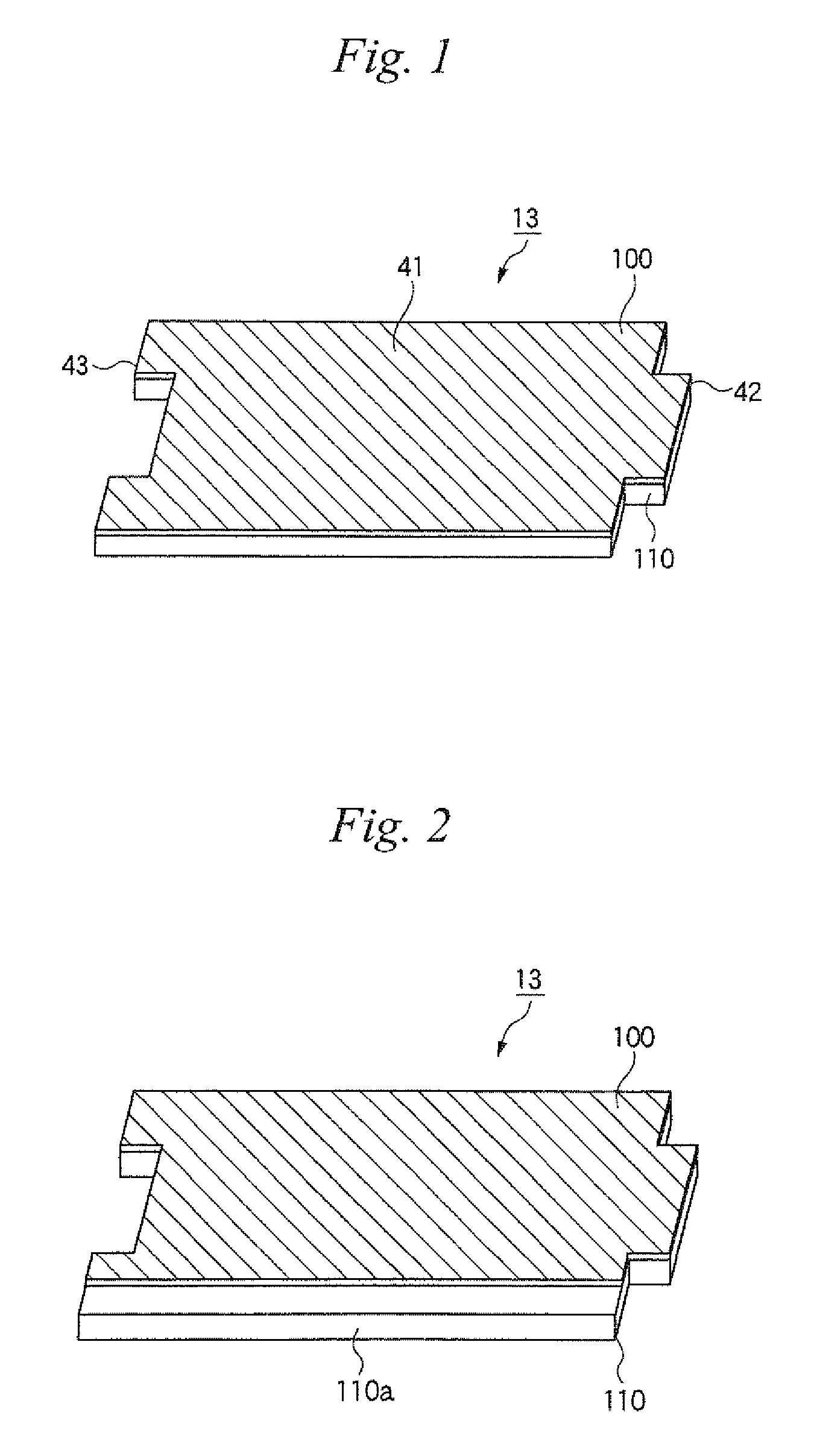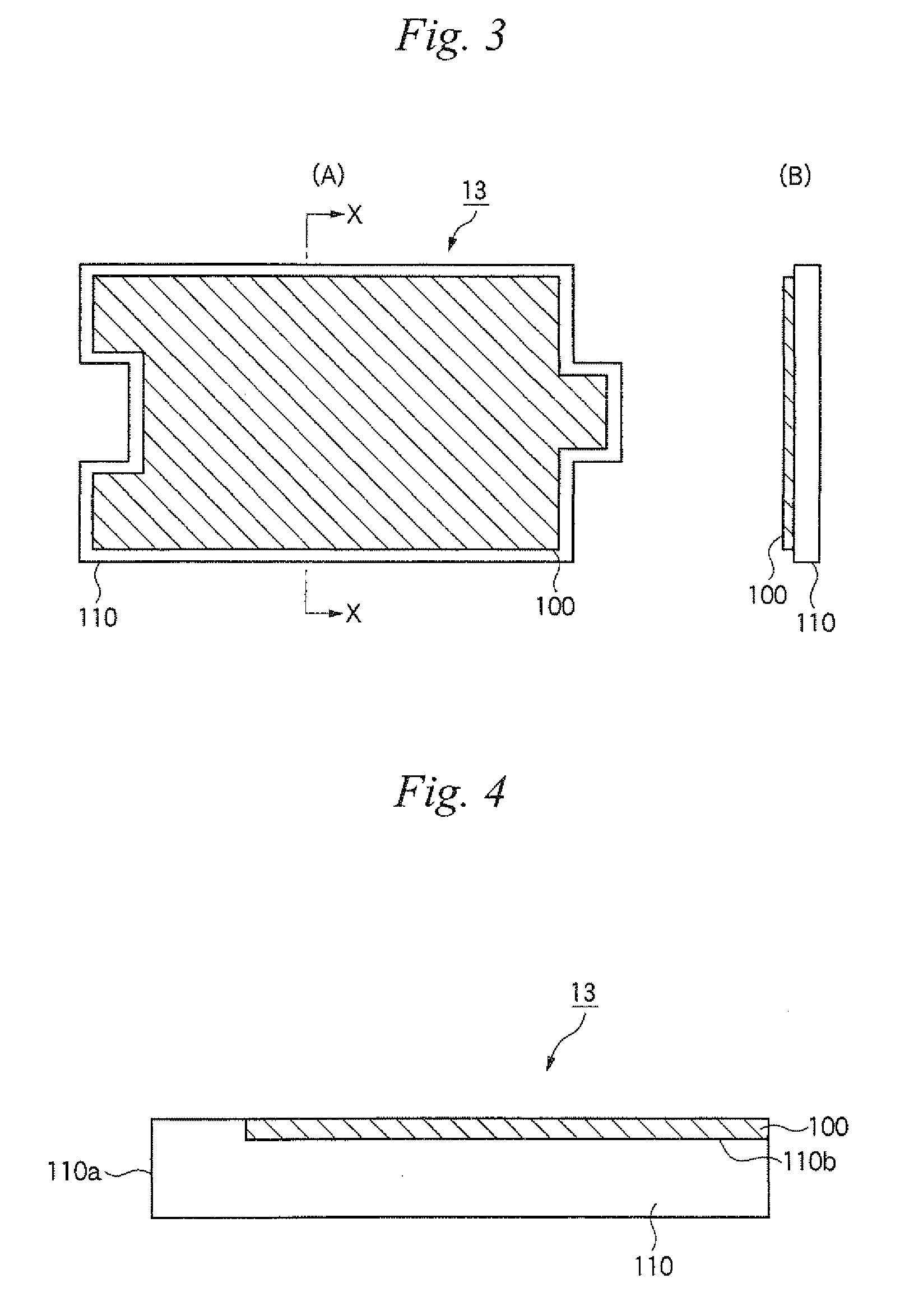Catalytic converter, holding material for catalytic converter and production method thereof
a catalytic converter and holding material technology, applied in the direction of machines/engines, transportation and packaging, separation processes, etc., can solve the problems of reducing the time taken until regeneration treatment, harming the human body and the environment, and affecting the performance of heat insulation performance, so as to improve the purification performance of exhaust gas
- Summary
- Abstract
- Description
- Claims
- Application Information
AI Technical Summary
Benefits of technology
Problems solved by technology
Method used
Image
Examples
example 1
[0097]A slurry containing 10 parts by mass of an acrylic resin as an organic binder and 10,000 parts by mass of water, based on 100 parts by mass of alumina fibers (alumina: 80% by mass, silica: 20% by mass) was obtained. This slurry was poured into a tabular mold, followed by dehydration molding to obtain a wet mat. This wet mat was dried at 100° C. while compressing it using a press plate to obtain a compressed mat having a basis weight of 1,100 g / m2 and an organic content of 10%. The bulk density of the compressed mat was 0.17 g / cm3, and the thickness was 8.5 mm. A fumed silica powder having an average primary particle size of about 7 nm was kneaded in a silica cloth having a weight of 500 g / cm2, followed by compression to prepare a sheet acting as a low thermal conductivity layer. Here, the thermal conductivity at 300° C. of the sheet was 0.03 W / m·K, the thermal conductivity at 600° C. was 0.04 W / m·K, the bulk density was 0.84 g / m3, and the thickness was 0.6 mm. Then, the mat an...
example 2
[0099]A holding material shown in FIG. 1 was obtained in the same manner as in Example 1 with the exception that “Pyrogel-6650” manufactured by Aspen Aerogels, Inc. was used as the low thermal conductivity layer. Here, the thermal conductivity at 300° C. of the low thermal conductivity layer was 0.02 W / m·K, the thermal conductivity at 600° C. was 0.03 W / m·K, the bulk density was 0.12 g / cm3, and the thickness was 1 mm. The thickness of the resulting holding material was 9.5 mm.
[0100]Then, a catalytic converter was prepared by using this holding material in the same manner as in Example 1, and attached to a heating vibration tester to perform similar temperature measurement as in Example 1. As a result, it was confirmed that the temperature reached 350° C. or more after 2.5 minutes. Further, no problem occurred such as dropping off of the catalyst carrier.
example 3
[0101]A mat comprising a blanket obtained by collecting alumina fibers (alumina: 80% by mass, silica: 20% by mass) in tabular form and needling the collected fibers was prepared. Here, the bulk density of the mat was 0.15 g / cm3, and the thickness was 4.0 mm. Further, 80% by mass of a fumed silica powder having an average primary particle size of about 7 nm, 18% by mass of a silicon carbide having an average particle size of 3 μm as a radiant material, and 2% by mass of glass fibers having an average fiber diameter of 10 μm and an average fiber length of 5 mm as reinforcing fibers were mixed by a rotary mixing apparatus. Then, the resulting mixture was compression molded by a dry system to prepare a fumed silica-containing sheet used as a low thermal conductivity layer. Here, the thermal conductivity at 300° C. of the sheet was 0.025 W / m·K, the thermal conductivity at 600° C. was 0.03 W / m·K, the bulk density was 0.20 g / cm3, and the thickness was 1.5 mm. Then, the sheet was held betwe...
PUM
| Property | Measurement | Unit |
|---|---|---|
| thermal conductivity | aaaaa | aaaaa |
| temperature | aaaaa | aaaaa |
| thermal conductivity | aaaaa | aaaaa |
Abstract
Description
Claims
Application Information
 Login to View More
Login to View More - R&D
- Intellectual Property
- Life Sciences
- Materials
- Tech Scout
- Unparalleled Data Quality
- Higher Quality Content
- 60% Fewer Hallucinations
Browse by: Latest US Patents, China's latest patents, Technical Efficacy Thesaurus, Application Domain, Technology Topic, Popular Technical Reports.
© 2025 PatSnap. All rights reserved.Legal|Privacy policy|Modern Slavery Act Transparency Statement|Sitemap|About US| Contact US: help@patsnap.com



